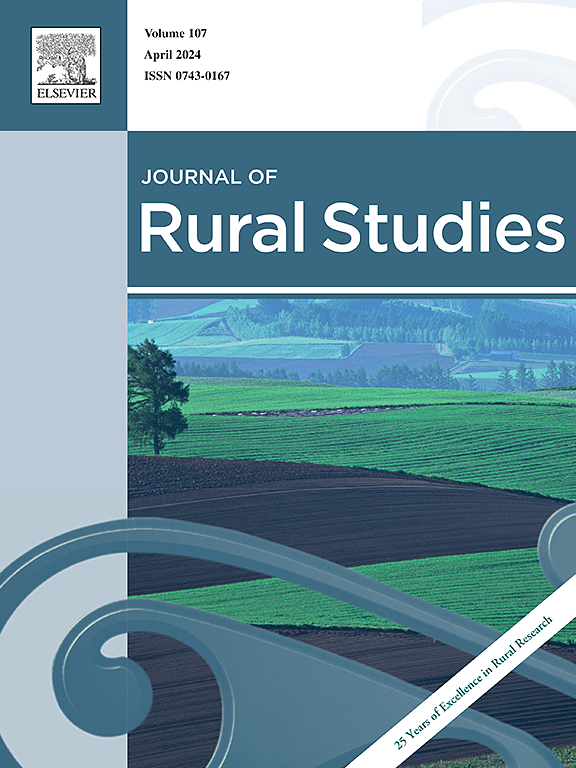Activating the income increase effect of geographical indications: The critical roles of intellectual property protection and internet development
IF 5.7
1区 社会学
Q1 GEOGRAPHY
引用次数: 0
Abstract
Extant literature suggests that Geographical Indications (GIs) play a crucial role in promoting rural development in China. However, for the majority of underdeveloped regions, due to factors such as insufficient intellectual property protection and limited internet development, the impact of GIs on rural residents' income remains to be verified. This study analyzes the relationship between GIs and the disposable income of rural residents in China, examining how intellectual property protection and internet development serve as critical factors in activating the income increase effect of GIs. Additionally, this study explores the mediating effects of technological and green innovation. By analyzing panel data from 274 prefecture-level cities in China covering the period from 2008 to 2021, our results demonstrate that: (1) The income increase effect of GIs for rural residents have not been fully realized during the study period. (2) After incorporating intellectual property protection and internet development into our analytical framework, we observed that these factors play critical roles in moderating the impact of GIs on rural residents' income. Specifically, GIs significantly increase rural residents' income only in regions characterized by high internet penetration rates and stringent intellectual property protection measures. (3) Under robust intellectual property protection and internet development, GIs promote technological and green innovation, leading to increased income for rural residents. Thus, we suggest that policymakers should enhance regional intellectual property protection, accelerate the construction of rural internet infrastructure, and foster innovation and green innovation initiatives to fully activate the income increase effect of GIs.
激活地理标志增收效应:知识产权保护与互联网发展的关键作用
现有文献表明,地理标志在促进中国农村发展中起着至关重要的作用。然而,对于大多数欠发达地区,由于知识产权保护不足、互联网发展有限等因素,地理信息系统对农村居民收入的影响仍有待验证。本研究分析了地理信息系统与中国农村居民可支配收入的关系,考察了知识产权保护和互联网发展如何成为激活地理信息系统增收效应的关键因素。此外,本研究还探讨了技术创新与绿色创新的中介作用。通过对中国274个地级市2008 - 2021年面板数据的分析,研究结果表明:(1)地理标志对农村居民的增收效应在研究期间并未得到充分体现。(2)在将知识产权保护和互联网发展纳入分析框架后,我们发现这些因素在调节地理信息系统对农村居民收入的影响中发挥了关键作用。具体而言,只有在互联网普及率高、知识产权保护措施严格的地区,地理信息系统才能显著提高农村居民的收入。(3)在强有力的知识产权保护和互联网发展下,地理信息中心促进了技术创新和绿色创新,从而增加了农村居民的收入。因此,我们建议政策制定者应加强区域知识产权保护,加快农村互联网基础设施建设,鼓励创新和绿色创新,以充分激活地理信息系统的增收效应。
本文章由计算机程序翻译,如有差异,请以英文原文为准。
求助全文
约1分钟内获得全文
求助全文
来源期刊

Journal of Rural Studies
Multiple-
CiteScore
9.80
自引率
9.80%
发文量
286
期刊介绍:
The Journal of Rural Studies publishes research articles relating to such rural issues as society, demography, housing, employment, transport, services, land-use, recreation, agriculture and conservation. The focus is on those areas encompassing extensive land-use, with small-scale and diffuse settlement patterns and communities linked into the surrounding landscape and milieux. Particular emphasis will be given to aspects of planning policy and management. The journal is international and interdisciplinary in scope and content.
 求助内容:
求助内容: 应助结果提醒方式:
应助结果提醒方式:


